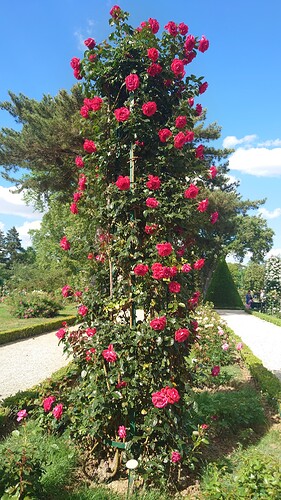I’d like to open a discussion for non-scientific folks like myself to talk about color and color inheritance in roses. I haven’t studied pigments and the like, so I’d welcome all levels of input, questions, and discussion about color and color inheritance.
I’ve never focused on breeding for red.
For me, a desirable red rose is one that doesn’t have pink in it. In the industry they call roses “red” that have a strong element of pink in my opinion and I always feel a little taken. For instance, Cuthbert Grant and Double Knock Out are two roses that have been called red that you have to look at sideways on a Wednesday morning to see as red. Cherry Frost, Kashmir, Mr. Lincoln, and Canadian Shield are some roses that I see as being true red.
When we were in elementary school we were taught that red and white make pink. We mixed up the paint and it happened. But that’s not what’s going on in roses, right? There is some element of blue that makes red into “rose” or dark pink. It’s not just adding white.
Red remains a bit of a mystery for me. It is so so easy to turn a red rose pink in the breeding process. So can I even use pink roses at all? I’m not after another fake red like Cuthbert Grant. Do I cross Cherry Frost with my orange-yellow roses? I have this feeling that if I crossed Cherry Frost with High Voltage all the seedlings would be f****** pink.
By the way, what color is Highwire Flyer?

